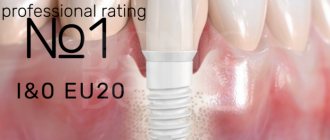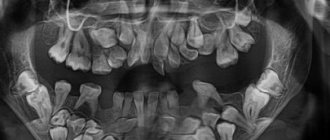What it is
Gold crowns are “caps” made of dental gold 900 and placed on the teeth to restore chewing functions. They can be used to correct the defect of a single tooth, or to replace several missing teeth using a metal bridge.
Gold has been used in dentistry for centuries and this is not an accident. This metal does not cause negative reactions from the body, is not subject to oxidation under the influence of saliva, and does not cause allergic reactions. At the same time, it is quite durable and can withstand even significant chewing loads.
What are dental veneers price?
Veneers are an orthopedic construction, which are thin, lightweight plates that cover the outer surface of the teeth. ... They perfectly help solve the problem of teeth darkened for various reasons, which cannot be corrected by whitening, adjust the shape and size of the teeth, or eliminate the gap between the teeth.
Interesting materials:
How to activate a memory card on Honor 7a? How to activate a Raiffeisen Bank Aval Ukraine card? How to activate a CityCard card? How do I activate my SPAR card? How to activate the roofing card? How to activate a troika card from your phone? How to activate a Troika card remotely? How to activate a card in Sberbank online after reissue? How to activate a card in Uzcard? How to activate the correct card via SMS?
Advantages and disadvantages
Advantages of false teeth made of gold:
- High biocompatibility with tissues of the human body. Gold does not cause the development of allergic reactions, is not toxic and does not provoke discoloration of the gums and enamel of adjacent teeth.
- Under the influence of oxidizing agents, gold crowns do not corrode and do not oxidize in the mouth. Therefore, they do not change the taste of saliva and cannot cause the development of an unpleasant odor.
- The sufficient softness of the metal makes it possible to produce crowns that exactly match the tooth being prosthetized and fit tightly to the supporting dense tissues.
- Gold has a high strength coefficient, does not chip and can withstand constant intense loads, so it is ideal for prosthetics of chewing teeth.
- Long service life. With proper prosthetics and proper care, gold crowns can last up to 15 years or more.
- Gold teeth have the same abrasion coefficient as natural enamel, so such dentures do not cause damage to the hard tissues of antagonist teeth.
- The anti-inflammatory effect is a reliable prevention of caries of supporting teeth under crowns.
But, despite the large number of advantages, several disadvantages of gold teeth can be noted:
- The low aesthetics of gold structures makes them undesirable for dental prosthetics in the visible smile area.
- The need to prepare a tooth for a crown is due to the fact that it is necessary to remove part of the hard dental tissues to ensure a tight fit of the metal structure. In addition, the gold prosthesis has a certain thickness that must be turned.
- The cost of gold false teeth is quite high.
Iron March
However, all these innovations, including improved drills and electric toothbrushes that appeared in 1960, were available only to residents of developed countries. Moreover, in the young states of Africa that freed themselves from colonial oppression, for example, many believed that even an ordinary toothbrush was a legacy of the white oppressors and should be eradicated. The Nigerian singer Fela Kuti, popular in the 1970s and 1980s, recommended that fans not spend money on brushes and toothpaste (produced by the hated transnational corporations of the former metropolises), but rather brush their teeth with a split stick, as befits Africans who stick to their roots. The great helmsman of China, Mao Zedong, went even further and asked the question: “Why clean? Does a tiger ever brush his teeth?
However, the situation was no better with the main ally and sponsor of the liberated peoples: in the Soviet Union, although dentistry was accessible and free, its quality remained basically at the level of the late 19th century. “Why can’t the country that launched the first man into space build a normal drill?” - wondered an anonymous dissident from the early 1970s. The archaic low-speed belt-driven drills used in Soviet clinics vibrated terribly during operation, which added additional suffering to patients: painkillers were only given when a tooth was removed.
Photo: Konstantin Chalabov / RIA Novosti
And teeth were removed often and a lot. The low general culture of the population, difficult living conditions, and the lack of basic care products had an effect - toothpaste came into wide use only by the end of the 1970s. Soviet people unmistakably recognized a former prisoner by their “iron” teeth, and a “huckster” from the trade by their gold teeth. Solzhenitsyn in “The Gulag Archipelago” described a typical criminal as follows: “The front side of the head, which in bipeds is usually called the face, in this godfather is sculpted by nature with disgust and dislike, or maybe from a predatory life it became like this - with a crooked droop, a low forehead, primitive scar and modern steel crowns on the front teeth.”
Note that for Solzhenitsyn, who wrote his book in the 1960s, steel crowns are still a “modern” type of dentures. Strictly speaking, they (along with expensive gold ones) remained the pinnacle of domestic orthodontics right up to the mid-1980s. It's hard to believe, but even the composition for filling teeth used in Soviet clinics was the same as in tsarist times.
At the same time, the work of a dental technician was prestigious and (provided one was willing to break the law) quite profitable. Although private dental practice in the Land of the Soviets has been prohibited since 1922 (resolution of the People's Commissariat of Health "On the use of dental property"), in real life, most specialists in dental prosthetics using government-owned equipment earned extra money from their own pockets. And official work could bring good income by Soviet standards: since 1964, wages for dental technicians, polishers and foundry workers were made according to a piece-rate bonus system. The gold alloy with which orthodontists worked was also a great temptation—newspapers of that time often published revealing articles about dishonest dental technicians.
Goldie
Photo: UPPA / Starstock / Diomedia
Gold in the mouth was especially popular not only as a symbol of prosperity, but also as a way to preserve savings in metal, the value of which to Soviet people seemed eternal and independent of any vagaries of fate (like the monetary reforms of 1947 and 1961, several battered underground millionaires who kept money in rubles). In the Central Asian republics and in gypsy communities, gold crowns were often placed in early youth, on still healthy teeth. True, if it ends up in places not so remote (from which no one was safe in certain periods of history), such a “gold storage facility” could become a source of big problems for the owner. According to the testimony of the same Solzhenitsyn, “thieves on the road do not disdain simple robbery: they saw an Estonian with gold teeth - they laid him down and knocked out his teeth with a poker.”
Manufacturing
Gold metal crowns are of the solid-cast type and are manufactured in several stages:
- After preparing the oral cavity and grinding the teeth, impressions are made of the dentition of the upper and lower jaw.
- In the laboratory, based on impressions, plaster models are made, which serve as a standard and an exact copy of the patient’s dental characteristics for the technician.
- In accordance with the plaster model, wax copies of future crowns are made, which are sent to the dentist’s office for fitting and adjustment.
- If the patient and doctor are satisfied with everything in the wax model, then the final gold crowns are cast on its basis, which are then ground and polished.
»
How are they made?
Gold crowns are solid structures. They are installed on the ground base of the tooth after the dentist has prepared the mouth. Afterwards, models are sculpted using plaster. They will become an exact copy of your future crown for the technician. The doctor takes into account all physiological characteristics and makes a suitable prosthesis. Following the plaster blanks, wax copies are made. They are needed so that the dentist can compare them with photographs and try them on in the patient’s oral cavity. The wax blanks can be adjusted, and then the dentist sends them to cast gold crowns. Before installing them in place, the dentures are ground and polished.
Installation
The process of installing gold crusts takes several visits to the dentist’s office:
- At the first visit to the doctor’s office, the patient’s oral health is examined, caries is treated and, if necessary, old fillings are replaced. The dentist grinds the tooth on which the gold structure will be installed. In this case, dense dental tissues are ground down within 1 mm, when for metal-ceramic dentures this figure reaches 2 mm.
- After making impressions, the doctor makes a temporary overlay plastic prosthesis on site, which protects the tissues of the supporting tooth and performs an aesthetic function.
- At the second visit, the dentist tries on a wax model of the prosthesis for the patient, adjusting it and correcting any identified deficiencies.
- During the patient's third visit to the doctor, the final gold crown is tried on and fixed with temporary cement for up to three months. This is necessary in order to finally verify the correctness of manufacture and the comfort of the design.
- After 3 months, the crown is removed, cleaned of cement residues, and its effect on soft tissue is checked. If there are no contraindications, the gold prosthesis is fixed to permanent composite materials.
You can get crowns on your teeth in Moscow at a cost-effective rate at Dantistoff Scientific Dentistry. Orthopedic dentists, candidates of sciences of the highest category. Sign up.
What to do with old gold crowns
If gold crowns fall out, are worn out or become unusable, you can order other jewelry from them or take them to a buyer (there are buyers who specifically buy “ dental gold ”). Many people are confused by the fact that there is cement left inside, which was used to attach the gold shell to the tooth. Is it possible to completely remove it from gold crowns? Here's how to do it correctly:
- 1st method. If you can go to a specialized dental store and buy a solution for disinfecting impressions, it will dissolve the hardened cement.
- 2nd method. You can clean gold crowns from teeth using home remedies by mixing ammonia, household detergent, and hydrogen peroxide. Pour this mixture over the crowns, heat everything up, keep it in the mixture for a few minutes, brush with a toothbrush, rinse under water, and wipe dry.
- 3rd method. Remove the frozen solution from gold crowns by crumbling it using a small, light hammer. If there are plastic teeth left inside, they are burned out with a gas burner, after which they can be easily pulled out with tweezers. After the procedure, leave the crowns in 15% hydrochloric acid for complete cleansing. It is undesirable to carry out such a procedure at home because the process is dangerous, harmful to health, and difficult to remove the remaining odor from the room.
- 4th method. Boil and cool water, cut a lemon and squeeze the juice into the water, stir. Place the old crowns, keep them in the solution for up to 12 minutes, and rinse. Instead of juice, citric acid is also suitable.
- 5th method. The most convenient option is to seek the services of a dental technician in a dental clinic with a license to work with precious metals. He will carry out firing and bleaching in hydrochloric acid.
This way, you can profitably hand over old crowns that have been lying around in a box for a long time at a gold buying point.
Moscow metro station Zvezdnaya, Danube Avenue, 23
Life time
Gold crowns are considered one of the most durable dentures. If such structures are made correctly and are ideally suited for a person, as well as with proper care for them, their service life on average reaches 15 years. But there are often cases when such crowns do not need to be replaced or repaired even after 20-25 years.
Gold crowns are reliable and durable structures, but only a dentist can correctly assess the possibility of installing them for each patient. When choosing one or another method of prosthetics, you need to listen to the opinion of a specialist.
How to care? How long will such a tooth last?
With proper care, such crowns will last a very long time - up to 15 years. For some people, gold teeth last 20 or 30 years and look great. To keep them in excellent shape, no special effort is needed. You just need to clean them twice a day as usual. You can rinse with antibacterial solutions or plain water. Visit your dentist's office every six months to evaluate the condition of your dentures. Dental gold dentures are the best and long-lasting solution for your teeth that do not require extensive maintenance.
Doc 14 Apr 2009
I had a MK bridge on my 4 upper incisors (6 years on temporary cement), they changed it to zirconium. It may be funny to doctors, but from personal feelings it seems that MK crowns are heavier. Not in the sense that it tilts the head forward. I don’t know how to explain correctly. Maybe it’s all a problem in the brain, or the bridge is better quality, but it’s really become easier
I think that if it stood for six years on temporary cement, then everything else in it was consistent with this fact. In addition, cast bridges have shrinkage, and as a result, if they are poorly seated, they can press and cause discomfort. Zirconium is milled and therefore does not give any shrinkage initially. And lastly, a good doctor will not make zirconium crowns into a six-unit bridge. Perhaps you now have them separately? In general, it's not about weight.
Grillz
These are decorative removable overlays. They can be fixed on 1-2 teeth, or they can cover a full row of teeth. They are created from various precious and base metals and plastics. At the request of the customer, they can be made in any shape and design, have different coatings (steel or colored). They are often encrusted with artificial and real diamonds, precious stones, and decorated with rhinestones.
This is what grillz look like
There are not only individual, but also stamped grills, which have a low cost. But these are distinguished by mediocre aesthetics and a low level of convenience. They do not fit well and may fall out of the mouth. They can cause allergies and even injure the mucous membranes in some sensitive patients.
“I once bought similar ones for myself on Ali Express for only 200 rubles. The purchase was out of curiosity and to take pictures with the girls, so I wasn’t particularly disappointed. They didn't stick to my teeth at all. I gave it to my younger sister to play with.”
Alina K, review from 32top.ru
Grillz are most in demand in the West. They were once worn by Rihanna, Madonna, Miley Cyrus, Kanye West, and Kim Kardashian. Today, such overlays are preferred not only by show business stars, but also by young people who like to attend various pretentious events and parties.
How to get into color?
Today it has become possible to manufacture orthopedic structures that are absolutely indistinguishable from real teeth in appearance. Of course, this statement is true only in relation to prostheses made of ceramics, metal-ceramics and plastic. Ceramics and plastic immaculately imitate both the color and transparency of natural tooth enamel.
The color of the enamel for crowns is selected according to the Vita scale, which contains most of the existing natural shades of teeth that exist. With metal-ceramics, only a zirconium dioxide frame can provide an accurate color match, since a traditional metal frame can shine through the ceramic coating, distorting the color.
Possible problems after prosthetics
Even with high-quality work by doctors and patient compliance with all rules, side effects from prosthetics may occur. They are rare, but the main consequences include:
- Discomfort when eating food. After teeth restoration, it is recommended to refrain from consuming solid foods for 2-3 days: chips, crackers, apples, so that the jaw muscles have time to adapt to the changed chewing load.
- Increased sensitivity of the dentin of the restored unit. The situation occurs after the pulp is removed from the tooth before its preparation. The symptom does not indicate any complications and can be relieved with pastes for sensitive enamel.
Advantages
Gold crowns have many advantages compared to other materials used for prosthetics:
- full compatibility with soft tissues of the oral cavity;
- the absence of any harmful additives in the alloy - as a result, there is no risk of an allergic reaction, irritation and other unpleasant manifestations on the oral mucosa;
- high strength – for the manufacture of crowns, gold of the highest standard is used, which is resistant to any damage;
- due to the softness of the alloy, antagonist teeth are not injured;
- After prosthetics, almost complete “fusion” of the natural unit and the gold crown occurs.
Rehabilitation and recovery period
No special adaptation is required after the crowns are installed. However, in some cases the patient may experience discomfort. Among them:
- increased tooth sensitivity and minor discomfort - this is important after the anesthetic has stopped working;
- slight pain when biting – adjustment may be required;
- parafunction of the masticatory muscles - in such a situation, the dentist will prescribe mouth guards at night;
- the taste of cement indicates that the material is being washed away from under the crown. You need to immediately visit a specialist to prevent infection and inflammation.
In general, gold teeth are rarely problematic. But if you notice any unusual sensations or discomfort, you should definitely contact your dentist.
Indications and contraindications
When doctors advise placing gold crowns:
- Pathological abrasion of tooth enamel.
Dentures made of gold are more resistant to abrasive influences, being an excellent option for installation on chewing teeth with fixation of the required bite height.
- The wear of the crown part of the tooth is more than 50%.
- The need to reconstruct a missing tooth.
- Allergy to other metals.
- The patient’s wish to supplement the dentition with a gold element.
But there are also contraindications:
- High degree of tooth mobility.
- Late stages of periodontitis.
- The reduced coronal part prevents the fixation of the prosthesis.
- Pregnancy.
Use of gold in dentistry: price per gram and sample of dental crown
Gold has been used in dentistry for a long time. In ancient times, gold teeth were a luxury that not everyone could afford. Gold emphasized the fact that its owner was financially wealthy.
But even today, gold does not leave dental clinics as a material, even despite the fact that the price of dental gold per gram is quite high.
In some cases, for example, due to medical indications, nothing else can be installed except for gold crowns.
Gold is considered one of the most reliable metals in dentistry for a reason. It has strength and durability, and in combination with sufficient ductility, it can compete even with modern ceramic denture designs.
But not all dental clinics can afford to install gold materials. This is mainly the prerogative of state-level dental clinics, because to work with valuable metals you need to obtain a license, and it is quite difficult to acquire.
Most clinics only work with alloys that may contain gold.
How are gold teeth made?
According to the manufacturing method, they can be:
Stamped ones, as you might guess from their name, are made from standardized stamps - blanks. Their sizes are adjusted immediately before fixation in the dentition with dental cement mortar.
Cast versions of prostheses are created separately - they are cast from gold using wax casts made in advance. They do not require any adjustment during installation, as they are pre-provided with the required dimensions.
Accordingly, they are more expensive, and to install them, you need to sharpen the tooth enamel more than when installing stamped crowns.
What type of gold is used and how much does one crown cost? The answer is simple: gold is used from the 850th to the 900th standard.
But often prostheses do not consist of pure metal, but of its alloy with copper and silver, which allows the prosthesis to be stronger. On average, the price per gram is about two thousand rubles.
The entire dental crown will cost from ten thousand rubles. To compare prices, you can give the following table:
Crown typePrices (in rubles)
| Gold prosthesis for one tooth | From 10000 |
| Metal-ceramic prosthesis (gold-based) | From 17000 |
| Zirconium dioxide design | From 13000 |
| Porcelain prosthesis for anterior tooth | From 16000 |
Conditions for installing a gold crown
There are cases when dentures need to be installed only from gold:
- if it is necessary to accurately restore the previous shape of the tooth;
- for the restoration of teeth involved in the chewing process, which bear a large load;
- with a strong bite or a habit of strong clenching or grinding of teeth.
- to strengthen teeth;
- or simply to improve the aesthetic appearance of the row.
Accordingly, there are contraindications for installing gold crowns. They cannot be installed if:
- the patient is under 16 years of age;
- there is a disease - chronic periodontitis;
- the patient is mentally ill;
- the patient is pregnant.
Preparation and installation of gold dental crowns
The process of preparing and manufacturing a prosthesis consists of the following stages:
- First, the tooth is prepared. He needs to be healthy, without caries. If necessary, carry out treatment, replace the filling, if it is old, if the tooth was on a pin, restore it, etc.
- Next, before starting the procedure, the tooth needs to be numbed.
- Now it has to be ground down to place a crown on it. Grind on each side, adjusting to the thickness of the crown being installed. Giving it the required shape, additionally small ledges are made for better fastening.
- After grinding, plaster casts of both the upper and lower dentition are made.
- Using the plaster version, a wax model of the crown is created, and then a gold prototype is cast.
Installation of a gold crown
Making a crown takes some time, so the patient is given a temporary one for the time being. Its task is to relieve a person’s unpleasant feelings and give the treated tooth temporary protection from damage and destruction.
When the permanent crown is made, the following is installed:
- The crown is tried on and, if necessary, additional adjustments are made to size.
- Immediately before fixation, it is fully checked how correctly the teeth meet with the crown, whether it fits tightly, etc.
- And only now it is fixed with special dental cement.
How is a crown installed? process description
There are certain stages of installing the product on the tooth.
- First of all, the preparatory process is carried out. It is to cure the tooth. For example, treatment of pulpitis, canal filling, etc.
- After which the tooth is turned on all sides. This procedure is necessary for the crown and is performed after pain relief.
- The next step is taking an impression; an impression is made of both jaws. Then a mock-up of the plaster crown is made.
- A plastic cover is placed on the ground tooth. This is necessary to provide protection from the external environment.
- After the crown is ready, it is tried on.
- Installing a crown on a tooth using cement.
There are no special restrictions after the manipulation. It is recommended to take care of it during the first three days, namely not to expose it to sudden temperature changes. You should also limit yourself from eating hard foods that require chewing effort.
Clasp dentures made of gold.
A 750 alloy alloy with the addition of platinum is used. Increased hygiene and high aesthetic properties. A small drawback is the high price; it is precisely because of such designs that there are ridiculous rumors about rich dentists.
Gold alloys for dentistry
- 916 gold alloy is used for crowns and bridges. The inside of the crowns is reinforced with a layer of 750 gold.
- 750 gold alloy. For the manufacture of clasp dentures, clasps, the alloy is more elastic and durable.
- Super TZ alloy has higher hardness.
- Superpal. This alloy is 90% palladium, but has the color and properties of gold.
- Imported casting alloys for metal-ceramic prostheses V-classic (Switzerland), Stabilor-G (Germany).
There are other alloys of noble metals, but in this area it is advisable to be a little conservative and use a time-tested material that has proven itself well.
Prices and payment features
Gold-containing alloys are purchased by dental laboratories and dental technicians from their suppliers and receive appropriate certificates and documents confirming the quality of the products.
Skyes
In simple terms, these are small jewelry with a flat base, which are small shiny rhinestones or stones. They are created from crystal, artificial sapphire and metal, inlaid with semi-precious stones (topaz, tourmaline, agate). They come in different sizes and shapes: heart-shaped, diamond-shaped, round, square.
Today they are installed on the teeth not only by celebrities, but also by many young people (in particular, of course, girls) who have nothing to do with the general public. Such jewelry can transform a smile when exposed to light, water, sun and camera flashes. They stay on the enamel for about 2-3 years if you follow a certain diet that excludes the consumption of solid foods, which can lead to the jewelry coming off.
The photo shows skyces on the teeth
To glue the skyce, you do not need to undergo any special preparation, just carefully remove plaque and tartar from the tooth. But it is important that there are no caries, cracks or chips in the area where the jewelry is planned to be fixed. And, of course, the installation of the jewelry must be carried out by a dentist.
There is no need to confuse rhinestones on clothes and skyces for teeth - these are two elements that are completely different in their quality characteristics. And under no circumstances try to install a regular rhinestone on the enamel yourself in pursuit of fashion. This can be fraught with damage to soft and hard tissues, the development of allergies and even intoxication of the body (some try to use ordinary glue for fixation).
Tattoos
In recent years, dental tattoos have become widespread, which can be applied both to natural enamel and to the surface of artificial crowns. They are popular with both young men and girls. True, the first and second choose different types of drawings. Thus, the strong half of humanity prefers to decorate their teeth with various significant dates, text phrases, and symbols of their favorite sports team. But the weaker sex prefers flowers, hearts, and various patterns.
This is what a tattoo on enamel looks like
Tattoos that are applied directly to the enamel (in the form of a sticker or with hypoallergenic inks) do not last long - 1-2 years. They are preferred to be made for different dates and events, for example, a wedding, a photo shoot. And the service life of tattoos decorating artificial crowns directly depends on how long the orthopedic structures themselves will remain in your mouth.
Many patients, with the help of dental tattoos, not only emphasize their individuality, but also hide minor or serious (when installing crowns) smile defects: chips, cracks, destruction, unsightly shade of enamel and stains, fillings.
Before purchasing such jewelry, think carefully. From the side or from a long distance, it may look like caries or an unaesthetic spot on the enamel. And in order for it to retain its colors longer and not wear off prematurely, you will have to stop eating too hard food.
Comments
My daughter has crooked teeth; if she lived in Japan, she would be happy. But this is still wrong and not very beautiful. We are thinking of leveling it out. What more fashionable and beautiful thing can you put in place for this purpose now, so that you don’t feel embarrassed?
Irina (05/06/2021 at 00:52) Reply to comment
- There are now many beautiful solutions in orthodontics. In recent years, for example, it has become very fashionable to wear braces, of which there are a great many. Depending on preferences, patients choose aesthetic ceramic or sapphire ones. Colored ligature braces, which come with colored rubber bands, are also popular - their color can be changed almost every month. If you want the treatment to be completely invisible to others, then you can choose transparent aligners or lingual braces that are fixed on the side of the tongue.
Editorial staff of the portal UltraSmile.ru (10.05.2021 at 09:12) Reply to comment
Good day. I first heard about the tattoo quite recently, when Morgenstern showed it. Are there any risks to teeth if you do it on your natural teeth? Surely the enamel is deteriorating
Ekaterina (07/08/2021 at 08:36) Reply to comment
Oh, so many fashionable and interesting trends in the field of dental decoration. My question is: how much do skyces, for example, affect dental health? Don't teeth under these things begin to develop prematurely?
Nina (07/08/2021 at 09:38) Reply to comment
I've actually been thinking about getting a small tattoo on one tooth for a long time. But I'm afraid it will hurt. Can you tell me whether special painkillers should be used to prevent pain?
Ekaterina (07/08/2021 at 15:19) Reply to comment
As for crooked teeth, I think this is too much. People have been straightening out their natural curvature for years, and here is this nonsense. I just don’t seem to know how to surprise people. But the diamond is a great idea.
Katerina (07/08/2021 at 20:45) Reply to comment
So many things have already appeared for teeth, and here it’s even scary to put on veneers. How is a tattoo applied to a tooth and how does it come off? Will it come off on its own or will I still have to go to the dentist?
Tanya (07/08/2021 at 09:07 pm) Reply to comment
Skys look very cute and aesthetically pleasing. I would like to do something similar, but I'm worried about the enamel. Will such jewelry harm your dental health? What material is better to choose so that the pebble lasts as long as possible?
Olesya (08/04/2021 at 18:27) Reply to comment
I heard somewhere that gold crowns are good for the body, supposedly they have a bactericidal effect, is that true? I just know that silver disinfects, but I’m not sure about gold.
Artyom (04.08.2021 at 19:04) Reply to comment
Write your comment Cancel reply
Recovery and rehabilitation
Once the dental crowns are installed, you can lead a normal life. It is allowed to eat and drink immediately, unless the doctor warns otherwise (this depends on the type of cement with which the crown was fixed).
During the first days, it is advisable to refrain from eating hard foods, as you may bite your tongue, cheek, or lip.
After installing dental structures, problems may arise when using them:
- Feeling of discomfort, as well as increased sensitivity of the tooth. Sensitivity will begin to increase immediately after the anesthesia wears off. If the dental nerve was not depulped during prosthetics, the tooth may be sensitive to cold or hot. In this case, the dentist will recommend brushing your teeth with a special toothpaste for sensitive teeth.
- A feeling of pain when biting indicates that the dental crown is set high. This problem can be easily fixed.
- If the patient has parafunction of the masticatory muscles, the doctor will make a night guard.
- There may be leaching of cement from under the crown and its weakening. This creates favorable conditions for the development of infection under the crown and the further development of caries.
- Due to improper fitting or decementing, the crown may fall out.










